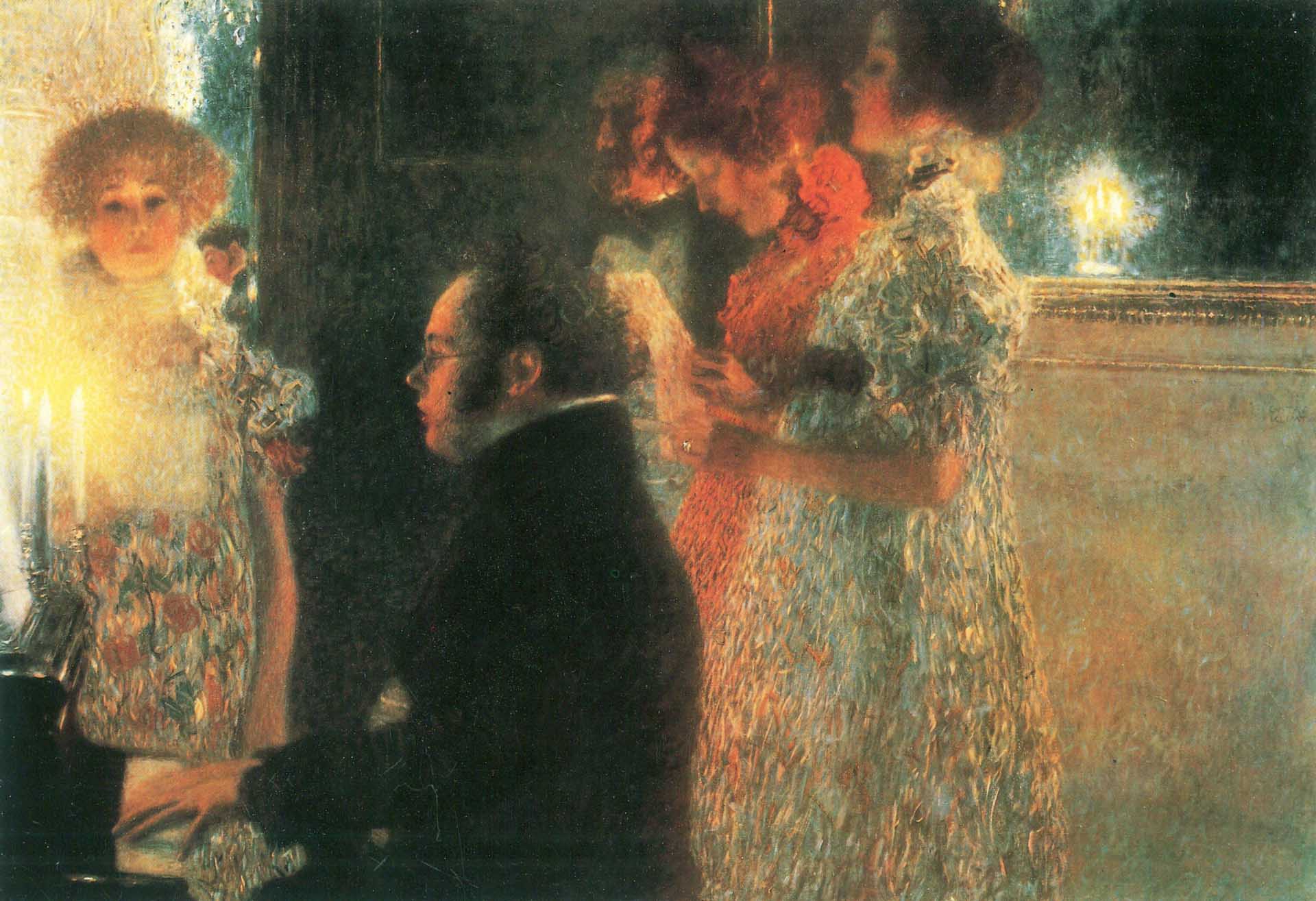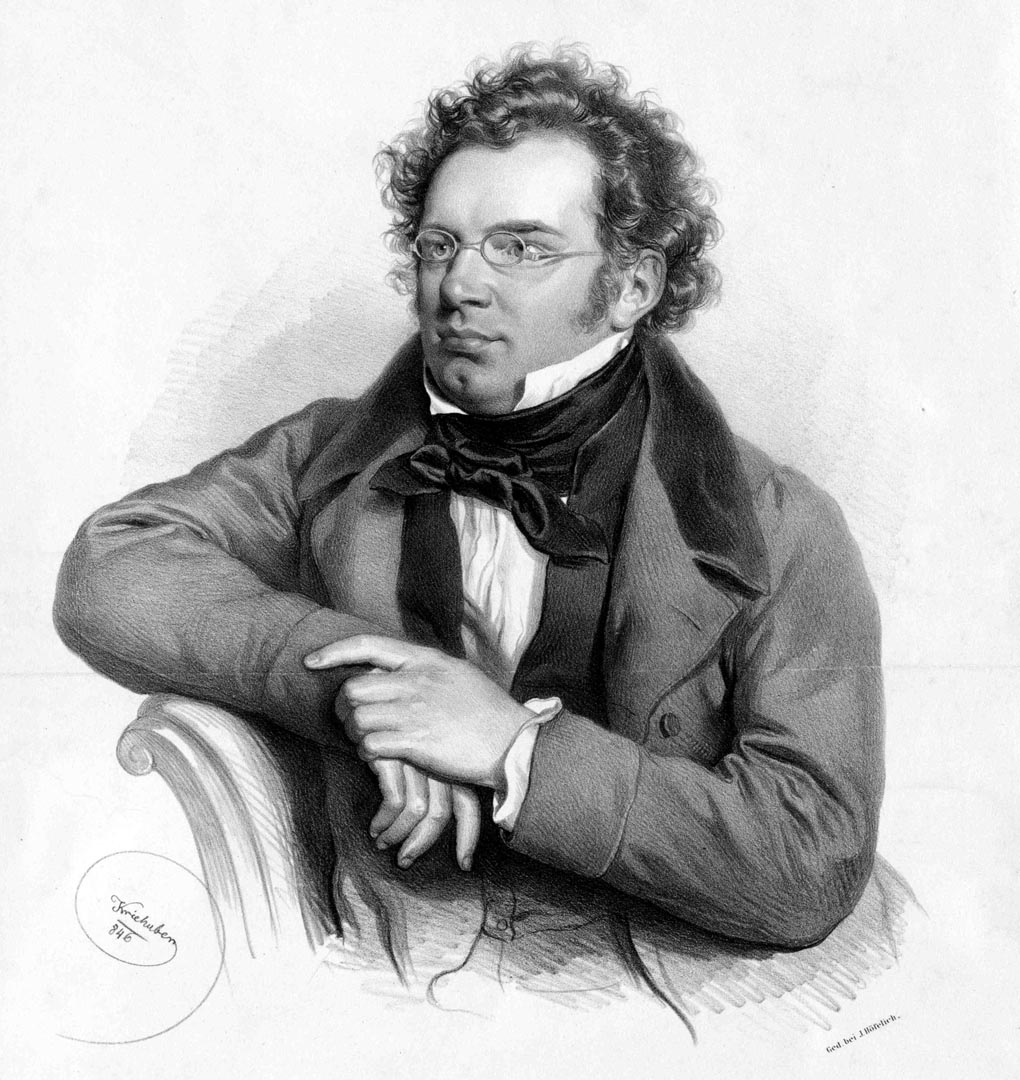By SCHUBERTcommons – Own work, CC BY-SA 3.0, Link
A Week with Schubert
at the Piano
July 6–12, 2025
Instructors: Michelle Fillion and Bruce Vogt
This evocative image of Franz Schubert (1797–1828) by Viennese artist Gustav Klimt, created in 1899 for the music-room of Austrian art patron Nikolaus Dumba, captures a host of associations with the composer and his music for and with piano. Born at the height of the Viennese classical period and heir to the piano legacies of Haydn, Mozart, and Beethoven, Schubert contributed a unique romantic voice to the literature for the piano that inspired the entire nineteenth century. As imagined here in its closing year, Schubert is poised at a late-century grand piano, bathed in a warm, romantic glow and surrounded by rapt singers and music lovers. Klimt’s Schubert is a small man with a huge gift for beauty, for melody and song, for emotional insight and dreamlike states, all to be relished in the community of friends. We, the modern pianists and listeners, are reflected in the shadowy recesses of a mirror that extends the challenge to create “our Schubert.”
The solo piano was a centerpiece of Schubert’s art, as realized in his sonatas, piano pieces, fantasies, variations, and dances for solo piano. He was also a master of ensemble music with piano, including numerous works for four hands and over five hundred songs with piano. In these works, Schubert evolved a uniquely personal voice combining expressive depth, poetic insight, harmonic daring, and a dollop of Viennese popular charm, while expanding the technical and coloristic range of the piano.
This summer course will meet daily for seven sessions of two hours each, and will be shared by musicologist Michelle Fillion and pianist Bruce Vogt. Each class will be devoted to a single topic. It will begin with a presentation directed by Michelle dealing with selected music in its cultural and performance context, to be followed by two or three performances of related music by course participants with commentary on the music and its performance by Bruce.
Although Schubert was an “amateur” pianist, some of his music – especially the larger sonatas and the “Wanderer” Fantasy – can be extremely difficult both technically and musically. Much of his piano music, however, is within the range of an intermediate or early advanced pianist. To give just a few examples of possible choices of works for class performance, participants should consider Schubert’s solo genres, such as the solo sonatas, piano pieces (such as Impromptus D 899 and 935 or Moments musicaux D 780), and dances (such as Waltzes and Ländler). Works for piano four-hands (such as the Grand Rondo D 951, eleven Polonaises, or, for the brave, the Fantasia in f minor D 940) will be highlighted in one class. Finally, one class will be devoted to the pianist’s role in interpreting Schubert’s Lieder, with a guest singer to assist us.
In order to perform in class, your selected work must be well and thoughtfully prepared at a “masterclass” level. This should not be an occasion to test repertoire in the early stages of preparation. If you need some advice in selecting suitable repertoire, feel free to contact either Bruce ([email protected]) or Michelle ([email protected]). If you wish to propose one of Schubert’s four-hand piano works, please let us know if you don’t have a partner taking the course and we will compile a list of those interested. Because his four-hand music may be less familiar to you, we have prepared a graded list of selected duo works.
Please submit your repertoire proposal of one or two works to Michelle and Bruce by May 15. At that time, we will also furnish a short list of Lieder for in-class demonstration. We will need two or three volunteer pianists to participate in this class.
Please note that this is not a masterclass, and that not all participants will have an opportunity to perform. Performers will be selected according to the relevance of their piece(s) to the day’s topic.
Possible portrait of the young Schubert


